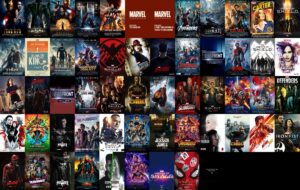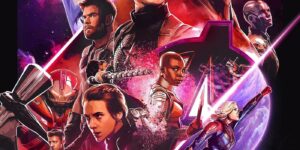The Marvel Cinematic Universe (MCU) has taken the world by storm, and one of the key factors contributing to its success is the inclusion of memorable side characters. These characters not only add depth and complexity to the storylines but also make the films more engaging and entertaining for audiences. From the humorous remarks of Thor’s trusty sidekick, Korg, to the brooding intensity of the Winter Soldier, these characters bring something unique to the table.

- The Best MCU Movie Quotes Of The Last Five Years
- How MCU Movies Handle Real-World Issues In Recent Films
- The Best MCU Movies For Family Viewing
- The Role Of Humor In MCU’s Most Recent Films
- How The MCU’s Latest Movie Sets Up Future Villains
In recent years, the MCU has placed more emphasis on the development of these supporting characters, often elevating them from mere background figures to full-fledged individuals with their own motivations and conflicts. In Captain Marvel, for example, the addition of the snarky alien known as Goose (real name, Mar-Vell’s cat, but let’s not get into that) added a fun and light-hearted touch to the film. On the opposite end of the spectrum, the character of Okoye in Black Panther brought a sense of gravitas and authority to the story, serving as a powerful reminder of the importance of tradition and duty.
The beauty of well-crafted side characters lies in their ability to expand our understanding of the main characters and their worlds. Take, for instance, the conflicted and complex Peter Parker, aka Spider-Man. In the Tom Holland-starring iteration of the web-slinger, it’s not just Peter’s story that takes center stage – it’s also the people around him, including his friends, family, and, of course, his beloved mentor, Tony Stark. Their relationships and interactions not only add depth to Peter’s character but also make the stakes of the story more personal and relatable.
Furthermore, side characters have the potential to bring in fresh perspectives and insights, challenging the main character’s worldview and encouraging growth and development. A perfect illustration of this is the dynamic between Dr. Strange and Wong, the Sorcerer Supreme’s trusted ally and magician. Wong’s presence humanizes the self-absorbed Strange, teaching him valuable lessons about humility and friendship. Their chemistry is undeniable, and their interactions inject much-needed warmth and humor into the film.
Marvel’s penchant for developing compelling side characters also speaks to the universe’s tendency to subvert expectations and defy genre conventions. These characters serve as the glue that holds the larger narrative together, helping to bridge the gaps between different storylines and franchises. In Avengers: Endgame, for example, the convergence of multiple plot threads was largely facilitated by the supporting cast, as characters like Rocket Raccoon, Nebula, and Ant-Man played pivotal roles in resolving the conflict.
The importance of side characters in Marvel’s latest movies is not just limited to plot progression, however; it also extends to emotional resonance and resonance with audiences. Characters such as Gamora and Valkyrie’s heartfelt moments with their respective adoptive families evoke powerful emotions and make their eventual sacrifices all the more impactful. Similarly, the deep bond between the Guardians of the Galaxy – a motley crew if there ever was one – resonates deeply with viewers, reminding us that family is not solely defined by blood ties.
As the MCU continues to expand and evolve, it will be intriguing to see how future films integrate side characters to further enrich their stories and deepen their audiences’ emotional connections. Will certain underutilized characters get the spotlight, or will new ones emerge to capture our hearts and attention? Whatever the case, one thing is clear – the art of crafting compelling side characters will remain an integral part of what makes Marvel’s movies so unforgettable.




